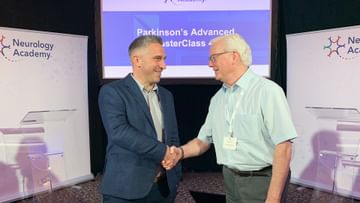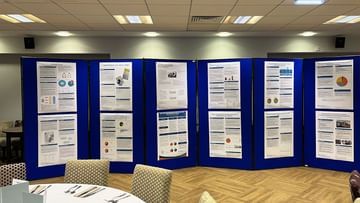How dance can help improve symptoms of Parkinson’s
When we think of neurological conditions or mental health we think of the brain. But this can mean we lose sight of the significance of the rest of the body. As Professor of Psychology Adrienna Mendrek shares in a recent article in ‘the Conversation’,
‘I have been mesmerized by the complexity of the brain, completely forgetting that it is part of the entire organism, intimately connected and reciprocally interacting with the entire body.’
The benefits of movement, not just exercise, have been highlighted more and more in recent years, and the dangers of sedentarism, or living a movement-poor life, are now understood, with dementia, type 2 diabetes and stroke all listing it as a risk factor (Peel, 2019). Movement and exercise have been found to improve neurogenesis (Shaffner, 2016) whilst dance specifically has been mapped to positive changes in the brain’s structure and use (Brown, 2005)
There have been a number of studies into the benefit of specific forms of movement for people living with neurological conditions, for example yoga (Mishra, 2012) and dance (Lossing: 2016, Hackney: 2014).
Psychology Mendrek’s article goes into great detail about not only the benefit of dance, but of dance/movement therapy specifically, and highlights its place in supporting treatment of a whole range of conditions from mood disorders to Parkinson’s and dementia.
Reviewing the current literature available for dance therapy, she highlights that ‘When comparing relatively long-term dance interventions (of six and 18 months) to conventional fitness training, several studies have found improvements in attention and verbal memory and neuroplasticity in healthy older adults. She argues that as dance, by its nature, ‘should improve not only muscle tone, strength, balance and coordination, but also memory, attention and visuospatial processing’ (Mendrek 2019).
Highlighting the way dance can modify emotional states, bringing stress relief, joy or a feeling of calm, Mendrek notes several studies examining both the ability to understand and diagnose emotional states from a person’s dance, but also to modify emotions through the association between motor components and particular emotions. In this vein, a review of available evidence recommends dance/movement therapy as a treatment for depression (Karkou 2019), commonly experienced by people with Parkinson’s and other neurological conditions.
The overall health and wellbeing of individuals is becoming an increasingly supported priority in mainstream healthcare as the evidence mounts regarding the impact of various lifestyle factors including diet, stress, movement and sleep on long term conditions (Peel 2019). From social prescriptions to subsidised gym access, the NHS is increasingly looking to support whole people, rather than treat symptoms (NHS House of Care 2019).
The evidence here demonstrates that dance not only assists in improved mood and mental health, but in improved mobility, cognitive function and neuroplasticity. Perhaps this simple form of self-expression might be the next prescription for people with Parkinson’s, depression, dementia and more.
References
- Mendrek A, ‘From depression to Parkinson’s: the healing power of dance’ The Conversation, published online 04 Dec 2019
- Peel C, ‘Health and wellness could revolutionise our management of long-term neurological conditions’ British Journal of Neuroscience Nursing, Published Online:26 Aug 2019 https://doi.org/10.12968/bjnn.2019.15.4.194
- Shaffner, J, ‘Neuroplasticity and Clinical Practice: Building Brain Power for Health’, Frontier Psychology, 26 July 2016 https://doi.org/10.3389/fpsyg.2016.01118
- Brown S, Martinez MJ, Parsons LM, ‘The neural basis of human dance’, Cerebral Cortex, Volume 16, Issue 8, August 2006, Pages 1157–1167, https://doi.org/10.1093/cercor/bhj057
- Mishra SK, Singh P, Bunch SJ, Zhang R. The therapeutic value of yoga in neurological disorders. Ann Indian Acad Neurol. 2012;15(4):247–254. doi:10.4103/0972-2327.104328
- Lossing A, Moore M, Zuhl M, ‘Dance as a treatment for neurological disorders’, Body, Movement and Dance in Psychotherapy: An International Journal for Theory, Research and Practice, Vol 12, 2017 - Issue 3 pub online 28 Nov 2016 https://doi.org/10.1080/17432979.2016.1260055
- Hackney ME, Bennet CG, ‘Dance Therapy for Individuals with Parkinson's Disease: Improving Quality of Life’, ResearchGate, Feb 2014, DOI: 10.2147/JPRLS.S40042
- Karkou V, Aithel S, Zubala A, Meekums B, ‘Effectiveness of Dance Movement Therapy in the Treatment of Adults With Depression: A Systematic Review With Meta-Analyses’, Front. Psychol., 03 May 2019 | https://doi.org/10.3389/fpsyg.2019.00936
Related articles
'The things you can't get from the books'
Parkinson's Academy, our original and longest running Academy, houses 22 years of inspirational projects, resources, and evidence for improving outcomes for people with Parkinson's. Led by co-founder and educational director Dr Peter Fletcher, the Academy has a truly collegiate feel and prides itself on delivering 'the things you can't get from books' - a practical learning model which inspires all Neurology Academy courses.


